Iran is still a country full of rich history, both ancient and modern. From biblical scenes to those scattered in the great myths. Although many may think that Iran consists mainly of desert, the wilderness makes up only 23% of the country. In reality, 55% of Iran consists of non-arable land, so it cannot be cultivated. In addition, mountains and forests cover the landscape, with centuries of history etched into them.
Iran's Ancient History

Iran was mainly known as Persia until the 1930s. The term 'Persia' is specifically used in the region of Persis, or modern Fars. The Persians were Indo-European nomadic people who, in 1000 BCE, migrated to the region. Records from the annals of Assyrian King Shalmaneser II in 844 BCE gave the first mention of Persians. The ancient Greeks first met Persians during the Achaemeni, or First Persian Dynasty, in 559-330 BCE. Before Alexander the Great of Greece conquered them, the Akamenide dynasty was dominant. Afterwards, the Sasanian dynasty, which was also composed of the natives of Persia, would rise to power on the Iranian plateau. They remained powerful until the 7th century AD.
Persepolis and the Gate of All Nations

Persepolis was the ceremonial capital of the First Persian Empire and became a World Heritage Site in 1979. The ruins date back to 515 BCE and are located on the plains of Marvdasht, just 60 km southwest of Shiraz. The construction of the Persepolis can be traced back to Darius I, who made the city the new Persian capital. Since the city was located in a mountainous place, it was mainly visited in the spring. In addition, the area meant that it was not ideal for the administration and management of the empire. Because of this, other cities such as Babylon were used as the administrative center of the First Persian Empire. Because of this, Persepolis was relatively unknown to the Greeks before Alexander the Great invaded Asia in 330 BC.
This eventually happened as a result of Xerxes' attempt to invade Greece a century earlier. Because of Xerxes 'actions, Alexander the Great undoubtedly plundered the capital and burned down Xerxes' palace. By doing this, Alexander conquered the first Persian Empire.
The Gate of All Nations is located in Persepolis. The gate also has the name 'The Gate of Xerxes' when construction began under Xerxes I. The name derives from the fact that the only entrance to the throne room was through the gate. This meant that all visitors from all nations had to pass it to see the king.
Naqsh-e Rostam, Iran's Ancient Necropolis
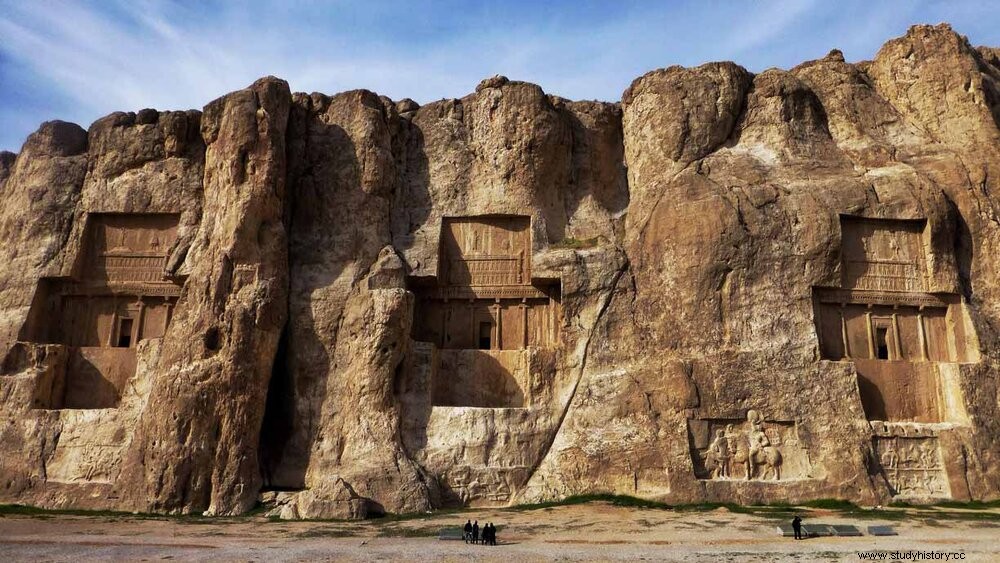
Located 13 kilometers from Persepolis, you can find a place called Naqsh-e Rostam, which translates to 'Picture of Rostam'. Four tombs are carved high on the mountainside, one of which indicates that it belongs to Darius I. The other tombs are believed to belong to Xerxes I, Artaxerxes I and Darius III. Furthermore, on the rock surface behind Persepolis 13 kilometers away, three more graves have been carved into the rock. These beautifully decorated tombs are believed to belong to Artaxerxes II and III, and the unfinished one to Darius III. The third tomb may be unfinished, as Darius III was the last of the Achaemenid line, and was overthrown.
At the foot of the cliff sits a building 12 meters high and 7 meters square. Although it had inscriptions from later periods, it has been believed to have been built in the 6th century BCE. The purpose of the building has been ambiguous, but it may also have been used as a tomb at one time.
Chogha Zanbil

This place is located in the ancient Elamite city of Dur Untashi, in southwestern Iran. It became a World Heritage Site in 1979 and used to be a temple and palace complex. There are thirteen temples, three palaces and the largest ziggurat in the country. The ziggurat measures 105 meters on each side and is 24 meters high, less than double the original expected height. Chogha Zanbil was built around 1250 BCE during the reign of Untash-Gal, an Elamite ruler of the Middle Elamite period. Of the thirteen temples, four are well preserved and evidence suggests that the ziggurat was once beautifully decorated. It was once covered with blue and green glazed terracotta on the outside and glass and ivory mosaics adorned the inside. Evidence tells us that the site was never completed. After being severely damaged by the Assyrians in 640 BCE, it was abandoned and decayed.
Chogha Zanbil was rediscovered in 1935 by the Anglo-Iranian oil company. This was done while the company was conducting an air survey and the site was discovered. The excavation began in 1946 and continued for almost 20 years. Several ox sculptures depicting the god Inshushinak were uncovered, as well as many other objects. In addition, five vaulted underground tombs were found, with remains inside. Unusually, four of the bodies had been cremated while only one followed the traditional Elamite ritual of being buried.
Taq-e Bostan

Taq-e Bostan has some of the best-preserved examples of Persian carvings from the Sasanian period. The area can be found near Kermanshah city, western Iran. Those depicted in the carvings include Ardashir II and Shapur III. The series of carvings etched into the mountainside includes one 9 meters high and another 4 meters high. The first arch shows the coronation of a Sassanid king and below it a man on his horse. Many historians believe that the man is Khosrow Parviz and his horse, Shabdiz. The sides of the arch are scenes of a royal hunt. On the right wall the king hunts deer, while on the left he goes after an echo sounder of wild boar.
The second arch shows father and son, Shapur III and III. Both have their hands on the sword and face each other. Finally, the third relief on the right side is smaller and much older. Historians believe that this relief is the oldest and depicts a king, his predecessor and the god Mithra. They stand on a man as a sign that they have defeated their enemies.
Behistun Inscription
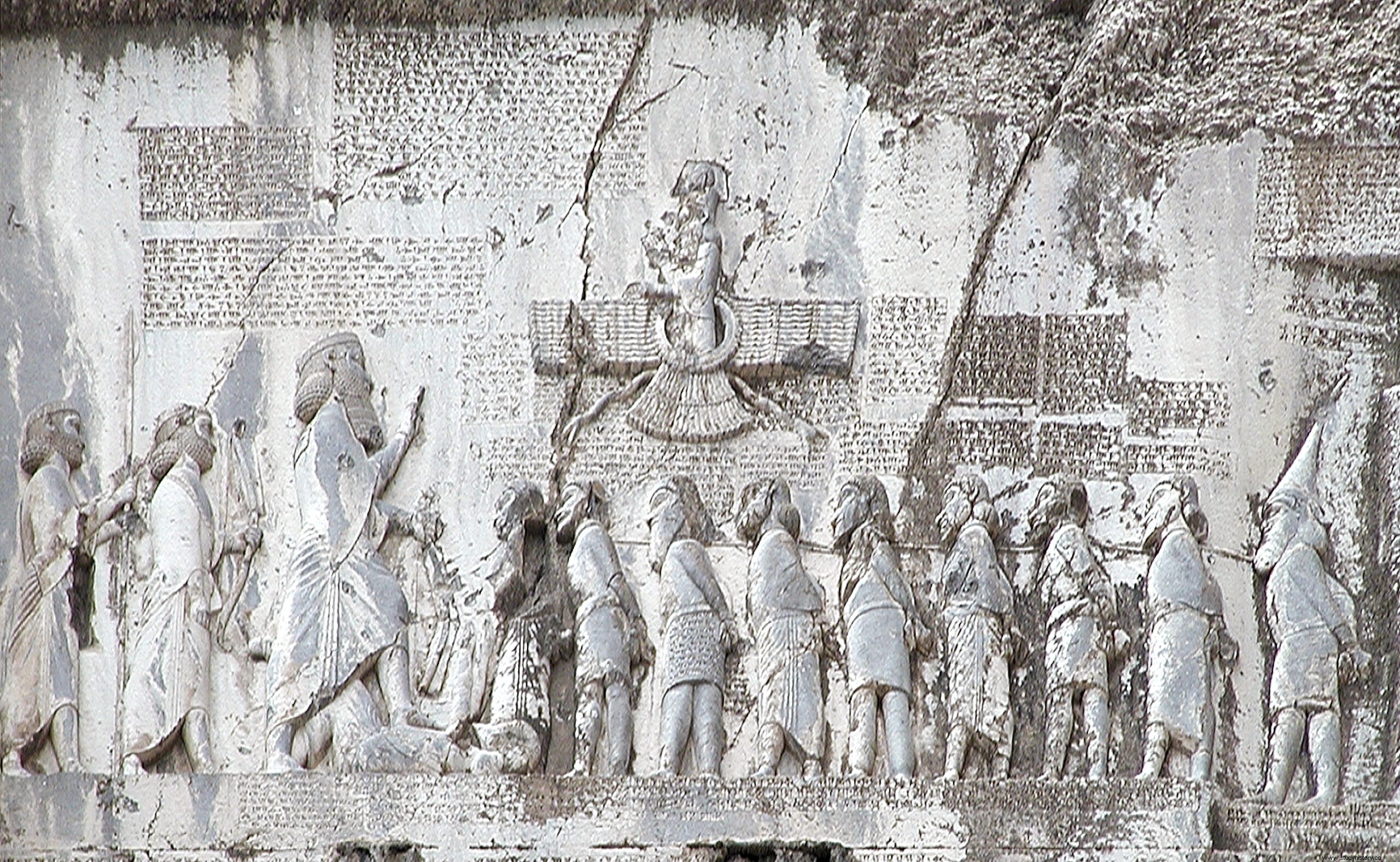
The Behistun Inscription, also spelled Bīstūn, became a World Heritage Site in 2006. This inscription is found in the Zagros Mountains, in western Iran. The village where it sits bears the same name and was located on the ancient road used by the Persian Empire. The road took you from Babylon to the capital of the ancient media, Ecbatana. King Darius I wrote the famous trilingual code on his journey from one city to another. The etchings were made on Elamite, Babylonian and ancient person and are unique.
Decryption of this mystery led to key information being revealed from studying the cuneiform. Upon translation, it was found that the inscription describes the story of how Darius came to power. Darius killed the usurper Guamata and took the throne once and defeated the rebels. In addition, it noted how the Persian territories were organized into provinces. Archaeologists determined from the inscriptions that the events took place between the fall of 522 and the spring of 520 BCE.
Naqsh-e Rajab

Naqsh-e Rajab, along with Naqsh-e Rostam, are candidates to be designated World Heritage Sites. This place is located 5 kilometers north of Persepolis at the foot of Mount Hosian. The three carvings on the mountain surface include Ardashir Babakan, Shapur I and other important individuals from the Ardashir era. All the carvings date back to the early Sassanid era and are beautifully preserved.
There are reliefs of Ardashir and his successor, Shapur, as well as the carving known as 'Shapur's Parade'. This part of the relief shows the celebration of the king's victory over the Roman emperor in 244 BC. The fourth carving on the site shows a high priest under Shapur I and the king's sons, Hormizd I and Braham I.
Shushtar Historical Hydraulic System
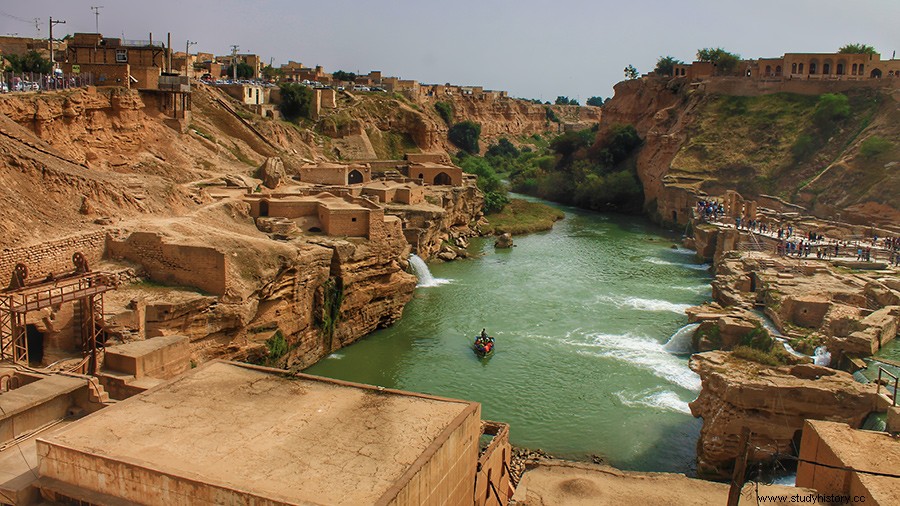
This huge system dates back to the 5th century BC. The hydraulic system was built over several centuries and by different civilizations, each of which added more. It has been suggested that construction began under the rule of the Persian king Darius the Great. The whole system reached completion around the 3rd century CE. This was done with knowledge from the First Persian Empire, the Mesopotamians and the Romans. It became a World Heritage Site in 2009 and was used until the 1920s. The water that was led from the river Karun and into various man-made canals drove mills for centuries. Although in use until recently, it is unlikely to work as well as it did a few hundred years ago.
Armenian monastery church in Iran

These three churches are located near the northern border with Iraq. The churches are some of the oldest Christian buildings in Iran and date back to the first century AD. Historical records show that many Armenians were followers of the prophet Zoroaster while others were sun worshipers. Christianity was preached by two men named Tatavoos (Thaddeus) and Batholemus (Bartholomew). These three churches are incredibly important as they have survived over 2,000 years of destruction and natural disasters. Furthermore, these churches are the only remnants of Armenian culture in the region in which they reside.
Monastery of Saint Thaddeus, Iran's oldest church

Also known as Qara Kelisa, or 'Black Church', this monastery has been named Iran's oldest church. The site is one of the oldest surviving Christian monuments in Iran and is very remarkable. This church is very important as it represents the Armenian Orthodox community in the country.
In 66 AD. The Armenian ruler ordered a massacre in an attempt to stop the spread of Christianity. The bodies of those killed were buried around the church, giving it the name it has today. Renovations and repairs to the church have given it two different sections. The original part of the church was built with black stone while the newer one with white. These different sections have been named 'black church' and 'white church'.
Saint Stepanos
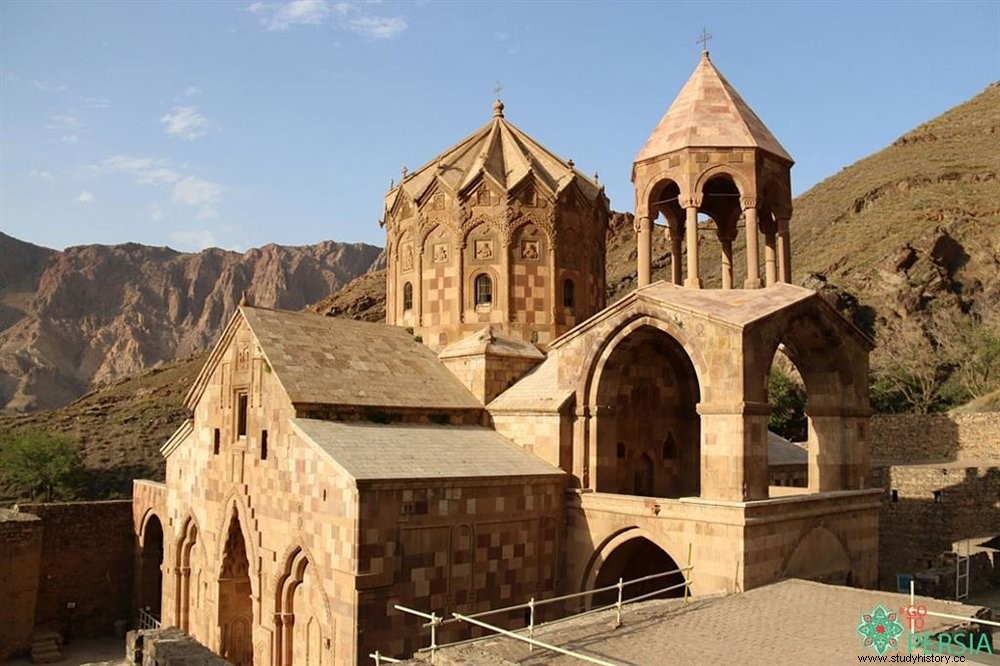
This church dates back to Saint Bartholomew. It is located across the Aras River on a wooded hill, calm and quiet. On the outside of the church are carvings of angels, saints and Armenian crosses.
Dzor Dzor chapel

Dzor Dzor Chapel, also known as St. Mary's Church, has had a tumultuous history. The church was destroyed over the years and was even moved from its original location to preserve it. This chapel is 7 meters long and 5 meters wide and moved in 1987 600 meters upwards. The new site was 110 meters higher than the original site and took 25 days to complete. This was done to save the site from a dam that was built nearby and to hold on to Armenian history.
Arg-e Bam
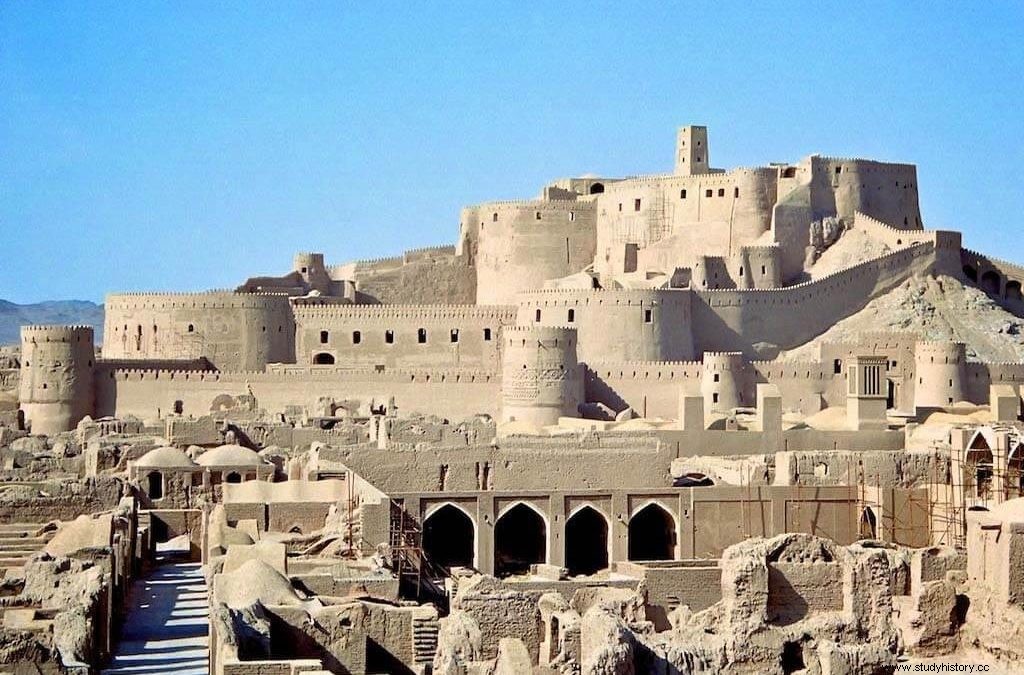
Arg-e Bam, also known as Bam Citadel, is the largest adobe building in the world. This place is located in southeastern Iran, in Kerman province. Bam town, where the citadel is located, sits at the crossroads of the Silk Road. This junction is located on the roads leading to Egypt, the Persian Gulf and Central Asia. Due to its location, the citadel was very important as a trade center, and often helped with the trade in cotton fabrics and silk.
This citadel was built in the Sassanid era, but was conquered by the Arabs in 645 AD. Afterwards, the place was used as a refuge for Khawarij rebels. Over the years, it was used for military purposes by various groups and nations. Record shows that the citadel was used for these purposes until the 1930s. This was good after it had stopped being used as a residential area. Unfortunately, 80% of the citadel was destroyed by an earthquake in 2003. Since then, reconstruction and repairs have been underway to make this place as amazing as it once was.
Arg-e Rayen

Rayen Castle is the second largest adobe structure in the world, the second only after Arg-e Bam. This castle is located west of Rayen town, on top of a hill on Hazar Mountain. The site dates back to the Sassanid dynasty, before the Islamic period. The castle was used as a commanding fortress at one time, and is located on the trade route from Kerman to Jiroft.
Historical documents tell us that the castle was built on the ruins of other structures, most likely castles. These other buildings are said to have been destroyed due to earthquakes or other natural causes. Due to the castle's geographical location and architecture, the structure has avoided being damaged too much. This has given Rayen Castle the title of the "most robust and impenetrable structure". Until 150 years ago, the castle was inhabited, but gradually forgotten over the years. In 1995, the site was designated a UNESCO World Heritage Site and restoration began.
Last thoughts on Iran ... Why visit?

One of the most iconic things about Iran has to be the bazaars. The most famous of these may be the Grand Bazaar in Tehran, with 10 kilometers of corridors. Not only are the bazaars, but there are also some exceptional buildings to visit. These include the Golestan Palace National Jewelery Treasury and the Nasir al-Mulk Mosque. No doubt there are more places than you expect that will surprise you, and far more than can fit on a final list.
With sagas that span the ages, you will not run out of historical sites to stare at awe. Whether you like the ruins of castles or the ancient carvings left in stone, Iran has something for you. If you do not get enough of history, you can check out the Catacombs of Rome or Angkor Thom.
